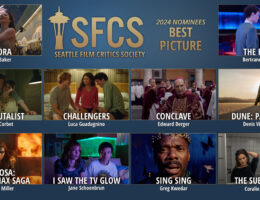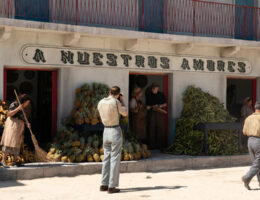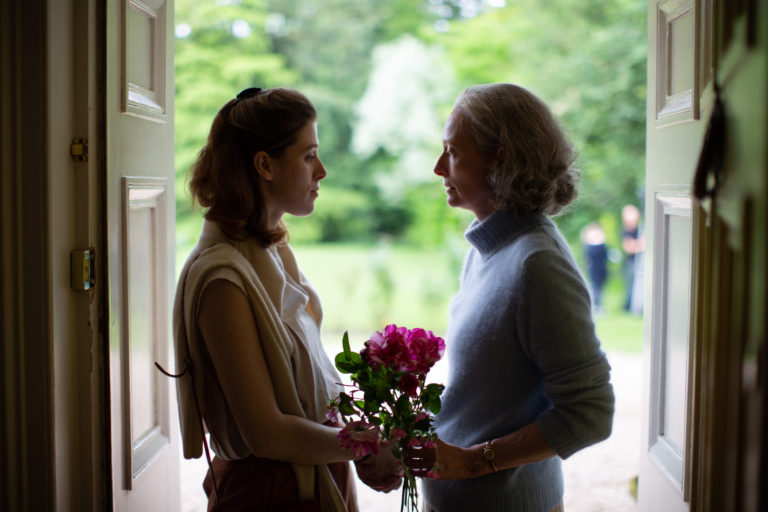The Souvenir: Part II (2021 | UK | 106 minutes | Joanna Hogg)
In a film landscape where every year’s box office charts are dominated by continuations, spin-offs, and reboots of existing intellectual properties, it shouldn’t be too surprising to see a sequel storm into the fall movie season to make a splash. Sure, there’s another big Marvel (by an Oscar-winning auteur no less) bombasting its way into multiplexes this weekend. That’s no shock. But the curious delight, however, is in A24’s clever counterprogramming: moving ahead the release date for Joanna Hogg’s sequel-of-sorts to her intricately-observed 2019 memoir, the Souvenir.
Although the first part may not have rocketed to the top of BoxOfficeMojo, Hogg’s reflective reminiscence of her own creative awakening amid a tumultuous romance was a solid presence on year-end lists (including mine). So, combined with the electrifying trailer, the news that she had revisited this story with a second installation made it a subject of intense curiousity and high anticipation. The resulting film – which Hogg describes as the second half of a pre-conceived diptych, or a B-side to the first album — doesn’t disappoint.
In brief, the first film tells the story of Julie (Honor Swinton-Byrne) an upper-class English film student struggling through the process of conceiving a historical drama set in the working-class port city of Sunderland. She falls into a heady relationship with the showily mysterious Anthony, and the thrill of young love allows her to remain willfully oblivious to, and later forgiving of, the many ticking time bombs and red flags that will ultimately doom them. That film ends with the tragic end of their romance and a glimpse at the beginning of her independence as a filmmaker.
Part II picks up in the immediate aftermath. Julie has decamped to her parents’ country estate, where they comfort her shocking loss with breakfasts in bed, soothing lunches, and walks through the sprawling acres of wildflowers. Tilda Swinton (Hogg’s longtime friend and Honor’s mother) returns as an exquisitely-composed yet nurturing presence, she has a spectral glow and is art-directed into every shot with clothing that perfectly coordinates with her surroundings. As her father, James Spencer Ashworth remains a bemused figure, admiring and supportive of the strong women in his life and their parallel artistic endeavors. Despite her mother’s wish that she stay on longer, after a period of cozy morning and (not) pajamas at dinner, it’s time for Julie to put that signature fuzzy overcoat on, face her empty apartment, and get back to work.
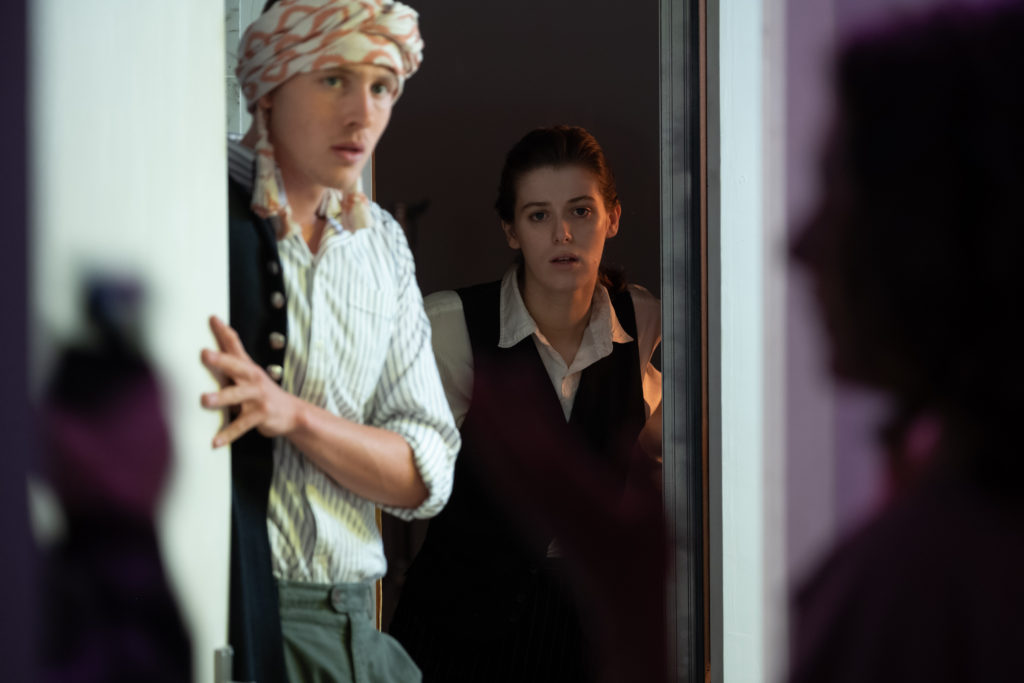
Her professors and classmates at film school are respectful of her loss, though the task of producing a graduation film while pitching in on her colleagues’ work – from stylized sci-fi dramas to gaudy period musicals – looms large. Julie sorts through her complicated grief by revisiting her relationship with Anthony and reconfiguring her own project from a neorealist historical drama to something that utterly confuses her advisors, to the point that they make her find her own funding to execute her film.
As Julie, Honor Swinton Byrne, conveys fragile introversion while also embodying a character with deep convictions and blossoming ambition. Much of the film finds her in conversation about seemingly small artistic choices, in conversation with other artists, and balancing her convictions with collegiality. It’s a quiet performance that brims with life below the surface of a placid demeanor. In a compelling vulnerable performance, we watch as her character investigates feelings of loss and longing while also reckoning with commitment to creative decisions.
The filmmaking relies on soft brightly lit shots that range from cutouts of nature marking the changing seasons to cozy interiors capturing nuanced emotional shifts. The soundtrack is spare, but effective and packed with deep and personal cuts. Nico’s “Sixty/Forty” drones to accompany Julie’s exit from the restorative embrace of her parents’ estate; the Eurythmics show up for a cathartic run; Soul II Soul’s “Back to Life” pops in at a culminating party that echoes the beginning of the first film. It’s a rare film that’s set in the 80s where the looks and sounds of the era aren’t a joke. If anything, the fashion is its own character, flowing women’s suits and avant garde pieces with evolving color palettes that evoke Julie’s mood and state of being. Culled from Hogg’s own collection, they give authenticity and texture to the film while functioning as its heroine’s special form of armor as she re-enters the world and takes charge of her project.
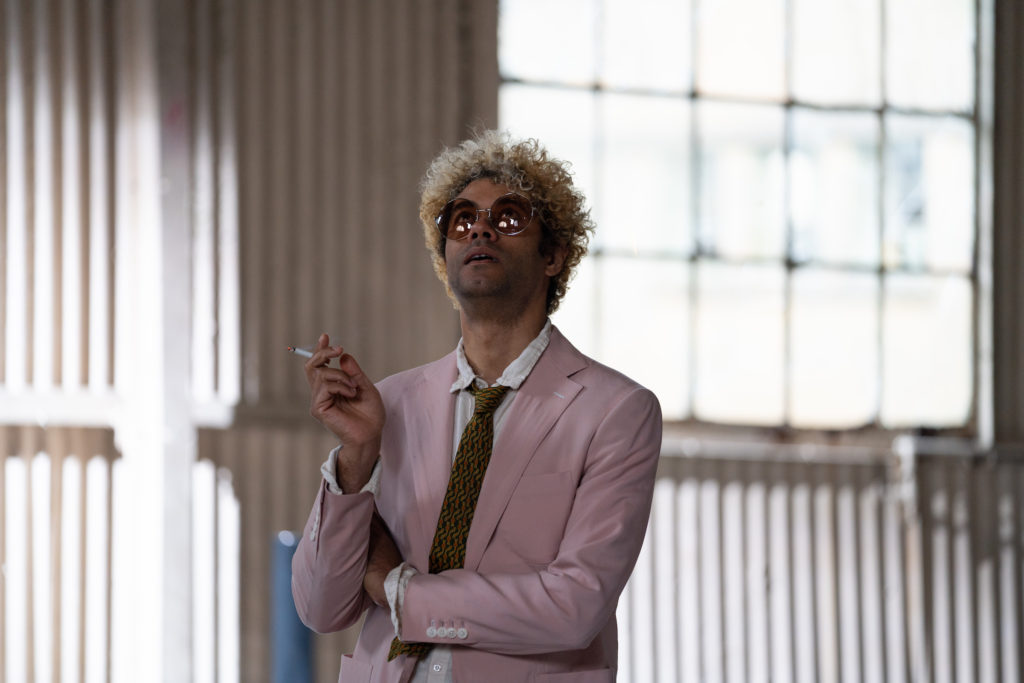
Hogg has stacked the cast with a long list up-and-coming actors to portray Julie’s film school compatriots, but most dazzling among them is the expanded role for Richard Ayoade. A brief presence in the Souvenir, as a dinner party guest who bluntly warned Julie about Anthony’s looming icebergs. Here, we see him in action as pretentious director colleague with outsized confidence. As always, he’s a comedic treasure and onscreen he represents a polar opposite to Julie’s reserved style. His droll, self-effacing humor and willingness to commit to the pompous artiste character lightens the mood. I cackled whenever he was on screen, and he steals every scene that he shares, delivering line after quotable line. His flashy wardrobe and penchant for dispensing droll, judgmental bon mots may ring of pomposity, but when this triumphant memoir feels like Joanna Hogg’s response to his question to Julie: “Did you avoid the temptation to be obvious … that’s all you can hope for, isn’t it?”
A film (the Souvenir: Part II) about making a film (the Souvenir), which is itself the prequel to the film we’re watching, could have been a nightmarish warren of self-referentiality. However, this sequel shimmers with life and deepens the portrait of these characters. Hogg works with a deep bag of tricks to bring coherence from memory, perhaps none quite as striking as the moment when Julie finally watches the film that she’s made. We’ve watched her reconfigure her project, frustrate her crew, and confuse her actors. As the camera shows us the movie through her eyes, it’s a dazzling surprise that upends our understanding of her vision and enlarges the universe of Hogg’s creative sandbox.
Whenever someone achieves some tremendous feat, they’re often forced to fumble through the obviously unanswerable question of “so, what was it like?” with a few trite words and phrases. Here, though, Joanna Hogg supremely answers the question of what it was like to be a young woman in the 1980s who followed her own quiet determination of vision, make a career for herself in a crowded creative field, and succeed in the realm of directing music videos, television, and ultimately films. When Part II concludes in a scene that directly reflects the opening sequence of Part I, one can’t help but be stunned by the supreme confidence and clarity of purpose by which Hogg has guided us through a metatextual hall of mirrors. By revisiting these formative moments in her own life she grants us access to the specificities of time and place with her own unconventional, yet enveloping cinematic grammar, that gently comments on itself in a sparkling triumph of cinematic memoir that contains multitudes.
The Souvenir: Part II arrives in local theaters on Friday November 5th.

